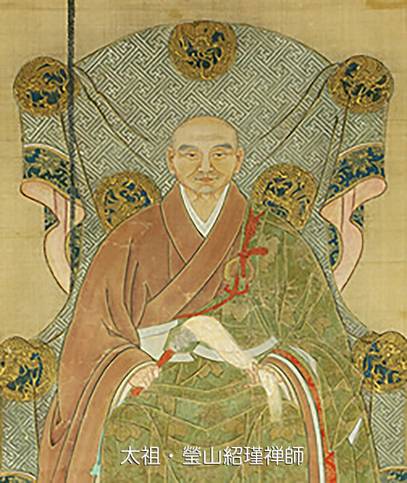In our ongoing Vine of Obstacles Zen practice period focussing on the teaching of Keizan Jokin Zenji (1261-1325), a fourth generation master in Japan, we see that a great deal of his teaching simply points to how to do it – Zen practice-awakening. And Keizan also exudes a particular tone, like a radio frequency, that we are also steeping ourselves in – provisionally, I’d describe it as “friendly luminosity.”
For example, how should a practitioner work most skilly with thinking? Keizan (as translated by William M. Bodiford) says,
“Simply know [your thoughts] intimately, analyze them intimately, then temporarily cut them off, sit for a while, and look!”
“Intimately” is such an important element of our Zen way. Here it means closely and personally, and also it has a sense of occurring in the context of family, friends, dharma friends, and all the so-called things of the world.
“Analyze” might seem surprising. In this context it doesn’t mean to sit and think about what’s coming up in a philosophical or psychoanalytic or dharmababblical (that’s a new word 🙂 manner. With this “analyze” translation, you might think that old Keizan is recommending that you wash mud with mud. Or it might just be the analytical scholarly mind of the translator that’s making that recommendation.
Click here to support my Zen teaching practice at Patreon of which translations and writings like this are one facet. You will also find an advertisement free version of this post there.
Indeed, the primary meaning of the character used here for “analyze,” 解, is “to liberate” and also “to loosen, unfasten, untie.” As in, untying karmic knots. So rather than analyzing thoughts, intimately unravel them.
“Temporarily,” or “for the time being,” is also an important detail in these instructions. Thoughts are not the enemy. They are truly also an expression of the one bright pearl. However, thoughts certainly can cloud the heart mind, making a whole and open-hearted embodiment of luminosity unlikely. So for now, cut thoughts off.
The phrase quoted above, then, could be alternately be rendered, “Intimately know, intimately loosen thoughts, and for now cut them off, sit, and look!”
Dōshō Port began practicing Zen in 1977 and now co-teaches with his wife, Tetsugan Zummach Sensei, with Vine of Obstacles Zen, an online training group. Dōshō received dharma transmission from Dainin Katagiri Rōshi and inka shōmei from James Myōun Ford Rōshi in the Harada-Yasutani lineage. He is also the author of Keep Me In Your Heart a While: The Haunting Zen of Dainin Katagiri. Dōshō’s translation and commentary on The Record of Empty Hall: One Hundred Classic Koans, was published in 2021 (Shambhala). His third book, Going Through the Mystery’s One Hundred Questions, is now available. Click here to support the teaching practice of Dōshō Rōshi.














